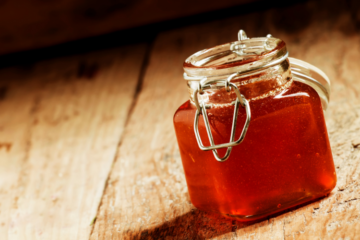
The Science Behind Mad Honey Rhododendron: Exploring Its Origins
Mad honey, produced from some varieties of rhododendron, has been of great interest to humans over the ages, more so due to its extraordinary features and cultural attributes. Such honey differs in its constituents and manifestations and comes mainly from regions where several rhododendron plants exist. It is famous for the powerful effects it causes in a person who would consume it. This honey is also of importance in history, medicine, and science. Understanding the history and nature of mad honey will enable us to discover the science behind its peculiar attributes, which help explain why it has maintained its allure over the centuries.
What Exactly is Mad Honey?
What is Mad honey? Mad honey, which is more known as “deli bal” in Turkey, is produced by bees feeding majorly on rhododendron flowers. Such bees feed mainly on rhododendron species containing naturally occurring compounds named grayanotoxins. Such grayanotoxins exist in the nectar of these flowers and end up in the honey since the bees process them into it. If a man happens to ingest grayanotoxins, that causes some reactions in the human body and distinguishes mad honey from others.
Throughout history, it has been used for different purposes, from traditional medicine in certain cultures to being sought out for its psychoactive properties. What is fascinating about Mad Honey? It is not how it originated but precisely what botanical and biochemical processes give it such strong properties. It is because grayanotoxins are contained in mad honey and thus enable it to induce a variety of responses within the body; hence, let’s spend some time discussing mad honey effects and reasons behind the notoriety that this type of honey has earned.
Effects of Mad Honey
There are several reports of mad honey, the effect differing with the dose consumed. Grayanotoxins are contained in mad honey, thus affecting the body by interrupting ion channels within the cell’s membrane, making the nerve and muscle cells sensitive. The small amounts of its doses may bring about mild euphoria or dizziness and a slight feeling of tingling. Such side effects enhance enormously though when taken in higher doses with symptoms like dizziness, nausea, and even hallucinations for some.
Thus, one of the unique interactions of grayanotoxins with the nervous system makes mad honey such an eagerly desired substance in some cultures. Although it has been used as a natural remedy for hypertension and gastrointestinal issues, consumption requires caution. The potency of the mad honey depends upon the rhododendron species the bees had found to forage on, as different species produce varying concentrations of grayanotoxins. Thus, knowledge of the impact of mad honey will hang in the balance of a critical appreciation of the kinds of botany and environmental conditions that go into its making.
Rhododendron’s Role in Making Mad Honey Different
What connects mad honey and rhododendron is the main attribute of the honey itself. It is in the flowers of rhododendron plants, especially species types such as Rhododendron ponticum, which are common in some mountainous regions containing high levels of grayanotoxins. This specific relationship between plants and their pollinators produces the final product.
Rhododendron grows in a particular geographical region, at least a part of Turkey, Nepal, and Caucasus. Such environmental factors and the kinds of rhododendrons found determine the quality and potency of wild honey. For beekeepers within the locality, these species within their biotopes matter because bees collect nectar from rhododendron flowers. As people learned which species were stronger with mad honey, they kept this unique product within the local community.
Historical and Cultural Significance of Mad Honey
Mad honey has a place in history books and folk tales in lands where honey production has become an age-old activity. In early times, it was said that mad honey was used as a war instrument. Historians such as Xenophon of Greece, are accounts wherein armies suffering from debilitating conditions were treated after eating the mad honey left intentionally by the residents to affect their enemies.
However, in this contemporary era, the cultural urge for mad honey is still used in medicinal and recreational practices. However, its appeal is not just for its consumption because it has a long-standing cultural identity with the soil and the specific vegetation.
The communities manufacturing it have adhered to the traditional methods of bee-keeping and harvesting that entail the preservation of an activity which has been in practice for centuries.
Much more than an extraordinary type of honey, mad honey is produced from the nectar of rhododendrons and results from an exact interaction between plant, bee, and environment. The effects linked to mad honey, based on grayanotoxins, create this mystery surrounding it, attracting all those interested in natural remedies and historical curiosities. Exploring the science behind the mad honey rhododendron reveals an interesting story from botanical origins to cultural and historical significance, reminding us how complicated nature can be and how it can modify human experience.
Want to experience this intrigue of having mad honey for yourself? Contact Maddest Mad Honey for more info on this product and its fascinating journey from flower to jar.












